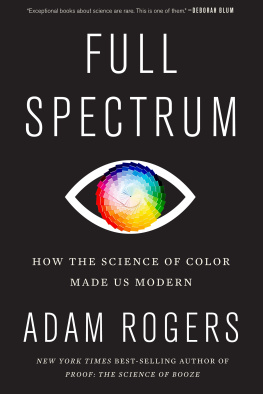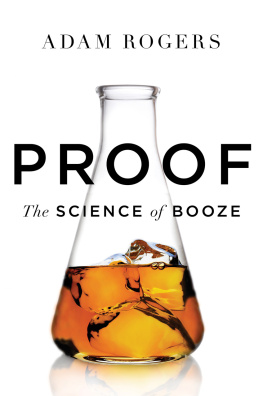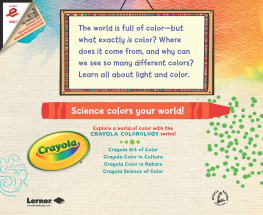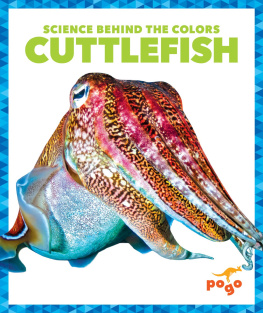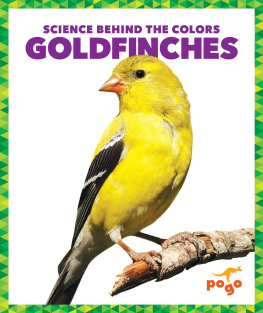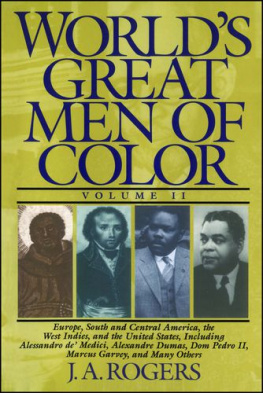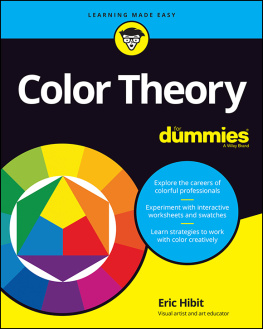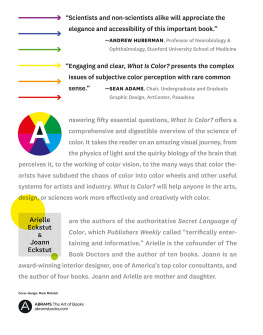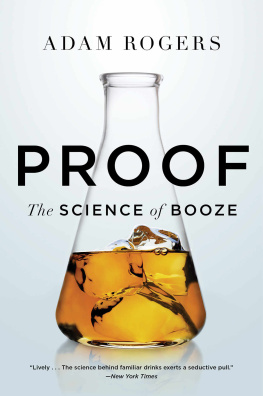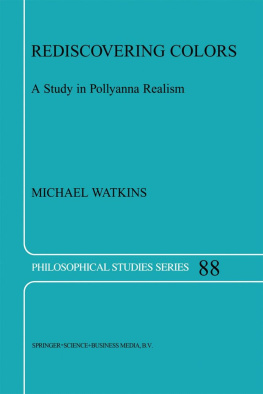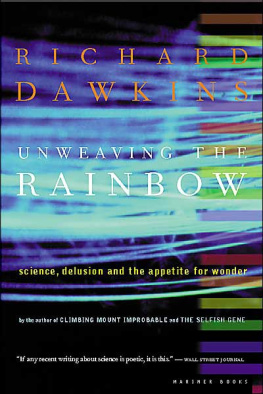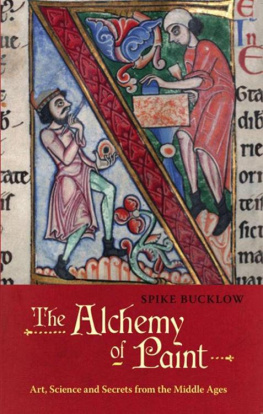Adam Rogers - Full Spectrum: How the Science of Color Made Us Modern
Here you can read online Adam Rogers - Full Spectrum: How the Science of Color Made Us Modern full text of the book (entire story) in english for free. Download pdf and epub, get meaning, cover and reviews about this ebook. year: 2021, publisher: Houghton Mifflin, genre: Detective and thriller. Description of the work, (preface) as well as reviews are available. Best literature library LitArk.com created for fans of good reading and offers a wide selection of genres:
Romance novel
Science fiction
Adventure
Detective
Science
History
Home and family
Prose
Art
Politics
Computer
Non-fiction
Religion
Business
Children
Humor
Choose a favorite category and find really read worthwhile books. Enjoy immersion in the world of imagination, feel the emotions of the characters or learn something new for yourself, make an fascinating discovery.
- Book:Full Spectrum: How the Science of Color Made Us Modern
- Author:
- Publisher:Houghton Mifflin
- Genre:
- Year:2021
- Rating:5 / 5
- Favourites:Add to favourites
- Your mark:
- 100
- 1
- 2
- 3
- 4
- 5
Full Spectrum: How the Science of Color Made Us Modern: summary, description and annotation
We offer to read an annotation, description, summary or preface (depends on what the author of the book "Full Spectrum: How the Science of Color Made Us Modern" wrote himself). If you haven't found the necessary information about the book — write in the comments, we will try to find it.
Full Spectrum: How the Science of Color Made Us Modern — read online for free the complete book (whole text) full work
Below is the text of the book, divided by pages. System saving the place of the last page read, allows you to conveniently read the book "Full Spectrum: How the Science of Color Made Us Modern" online for free, without having to search again every time where you left off. Put a bookmark, and you can go to the page where you finished reading at any time.
Font size:
Interval:
Bookmark:
Copyright 2021 by Adam Rogers
All rights reserved
For information about permission to reproduce selections from this book, write to or to Permissions, Houghton Mifflin Harcourt Publishing Company, 3 Park Avenue, 19th Floor, New York, New York 10016.
Portions of this book first appeared, in different form, in Wired in articles titled The Dress, Vantablack, and Colors Are How Your Brain Makes the World, all by Adam Rogers.
hmhbooks.com
Library of Congress Cataloging-in-Publication Data
Names: Rogers, Adam, 1970 author.
Title: Full spectrum : how the science of color made us modern / Adam Rogers.
Description: Boston : Houghton Mifflin Harcourt, 2021. | Includes bibliographical references and index.
Identifiers: LCCN 2020039337 (print) | LCCN 2020039338 (ebook) | ISBN 9781328518903 (hardcover) | ISBN 9780358449379 | ISBN 9780358449010 | ISBN 9781328519146 (ebook)
Subjects: LCSH: ColorPhysiological effect. | ColorPsychological aspects. | Color vision. | Color (Philosophy)
Classification: LCC QP483 .R64 2021 (print) | LCC QP483 (ebook) | DDC 152.14/5dc23
LC record available at https://lccn.loc.gov/2020039337
LC ebook record available at https://lccn.loc.gov/2020039338
Cover design by Brian Moore
Cover image: Bluestocking / E+ / Getty Images
Author photograph Jenna Garrett
v1.0421
For Melissa and the kids
Imagine the island of Britain, its southwestern corner extending a peninsula like a dainty Victorian foot toward the Celtic Sea and the Atlantic beyond. That foot is the southern end of Cornwall, Englands beach vacation hub, and its heel is sometimes called the Lizard for etymological reasons that have nothing to do with reptiles.
Keep that picture of Cornwall, that tiptoe of England, in your head. Only now rewind the clock 400 million years and move it somewhere near Earths equator, at the bottom of a small, muddy ocean. Thats where Cornwall was in the Devonian period, where it spent maybe 40 million years accreting volcanic rocks, sediment, and gunk until a sly continental plate slid up from the south and slammed into another. The supercontinent of Pangaea was under construction, and the little patch of rock that would become Cornwall was caught in the collision zone. Tectonics were creating the world of tomorrow, which is now today.
Which brings me to a parking lot at the north end of the Lizard, just outside the chain-link fence boundary of Royal Naval Air Station Culdrose. I leave my rental car beneath fighter jets screaming into a bright blue sky so Robin Shaila geologist at the University of Exetercan take me for a drive. All that hot tectonic-plate-on-plate action in the Devonian made todays Cornwall one of the most interesting places in the world if you care about rocks.
We do. Just about six miles from the parking lothalf an hour of tough driving on ancient, sunken single-lane roadsis the spot where, two centuries ago, a priest named William Gregor, who was simply the most interested in rocks, discovered an element called titanium and changed the way the world looked forever.
Once under way, Shail apologizes for the smell inside his Volkswagen. Apparently an Oxford geologist who specializes in Lizard-like regions left his wet shoes in the car overnight, and Shail didnt notice until this morning. Shail packed the still-damp offenders into a plastic bag and stuffed the bag into the Golfs trunk, already full of other shoes, gear, and boxes of scientific journal articles. Geology is an outdoorsy science, and Shail, bespectacled and unshaven, tall and lean, has the slightly jagged outline of someone who climbs cliff faces for work. His trunk conveys a vibe of preparedness.
Shail did his PhD on Cornish geology, and now in addition to teaching at the famed Camborne School of Mines, he works with the areas mining companies. Im kind of a regional geologist, Shail says. Its regarded as a little parochial. As we bump along past Cornwalls whitewashed houses with thatched roofs, green fields beyond the hedges, and low stone walls, Shail tells me how it all got this way.
The muck and mud where those continents collided got pushed and pulled, folded and crumpled. The crumpled zone became a new mountain chain that reached across the part of the planet that would eventually become the Atlantic Ocean. This is called the Variscan range.
Meanwhilewell, over the next couple hundred million years, into the Permian period, so more mean than while, I guessa piece of ocean crust got sliced off, like a thin sheet of cheese curling upward when the grater hits the wedge. It ended up high and dry. In geological parlance this is an ophiolite, a small plateau on the edge of what became the southwest tip of Britain. Its the Lizard, a name that probably comes from a Cornish word that meant high land, geologically different from the already geologically weird chunk of Cornwall its attached to.
Subterranean granite melted into magma, which floated up, solidified, and fractured. Meanwhile a bunch of other minerals, such as cassiterite (tin oxide), chalcopyrite (copper and other stuff), and wolframite (mostly tungsten), remained liquida 300-degree-C, watery fluid. The cracks in the granite filled up with the superheated mineral cocktail, forming the veins and lodes that miners would eventually dig for.
Rainthis is England, after allwould eventually expose areas of granite and filter through it down into local streams. Cornwall has been a mining town since before there were mines, reallytwo thousand years ago its tin and copper were traded as far away as the Mediterranean. It was sort of pre-Brexit trade, Shail says wryly. Tin and copper together make bronze.
By the eighteenth century, Cornwall was producing more tin than anywhere else in the world. Miners dug some of that out of the hills, but nearly half of it came from the mud at the bottom of rivers and creeks. When rain falls on exposed granite and erodes it, it carries denser minerals and ores downhill. Filter the gravel and you get the orelike panning for gold, except here the ore is cassiterite.
Cornwall became an economic powerhouse and a center for science and technology. Using steam power to pump groundwater out of mines was a Cornish innovation, for example. And another plentiful mineral in Cornwalls dirt, kaolinite, turned out to be the key ingredient in fine Chinese-type porcelain, which ultimately allowed England to break into that industry in the second half of the eighteenth century. (Before that, English factories had imported kaolin from the Blue Ridge Mountains of North CarolinaCherokee land.) When Josiah Wedgwood made porcelain in the 1770s, he used Cornish clay.
Today Cornwall has more of a reputation as a beach resort and vacation destination, but that mineral history is still there, just beneath the surface. Shail navigates us to the hillside town of Manaccan, a cluster of gray stone buildings along narrow lanes at improbable anglesquintessential Cornwall, he says with a smile. We drive down the hill toward Gillan Creek, burbling through a green and shady vale. I wouldnt ordinarily use a word like vale, but the whole place feels like something out of a Tolkien book.
When we arrive at a little stone bridge barely wide enough for a car, Shail parks. Up the road, the sun sparkles off of a sign that reads MANACCAN , and just past that it is sparkling even harder off of two little rectangular buildings, one built of raw local stone and the other painted a tidy white, with two brick chimneys. These are what is left of the old Tregonwell Mill. One of the buildingsthe stonier onehas a metal square bolted to it. This titanium plaque commemorates the identification of the metal menachanite, later called titanium, by the Reverend William Gregor in the Leat of Tregonwell Mill in the Parish of Manaccan in Meneage in 1791.
Font size:
Interval:
Bookmark:
Similar books «Full Spectrum: How the Science of Color Made Us Modern»
Look at similar books to Full Spectrum: How the Science of Color Made Us Modern. We have selected literature similar in name and meaning in the hope of providing readers with more options to find new, interesting, not yet read works.
Discussion, reviews of the book Full Spectrum: How the Science of Color Made Us Modern and just readers' own opinions. Leave your comments, write what you think about the work, its meaning or the main characters. Specify what exactly you liked and what you didn't like, and why you think so.

